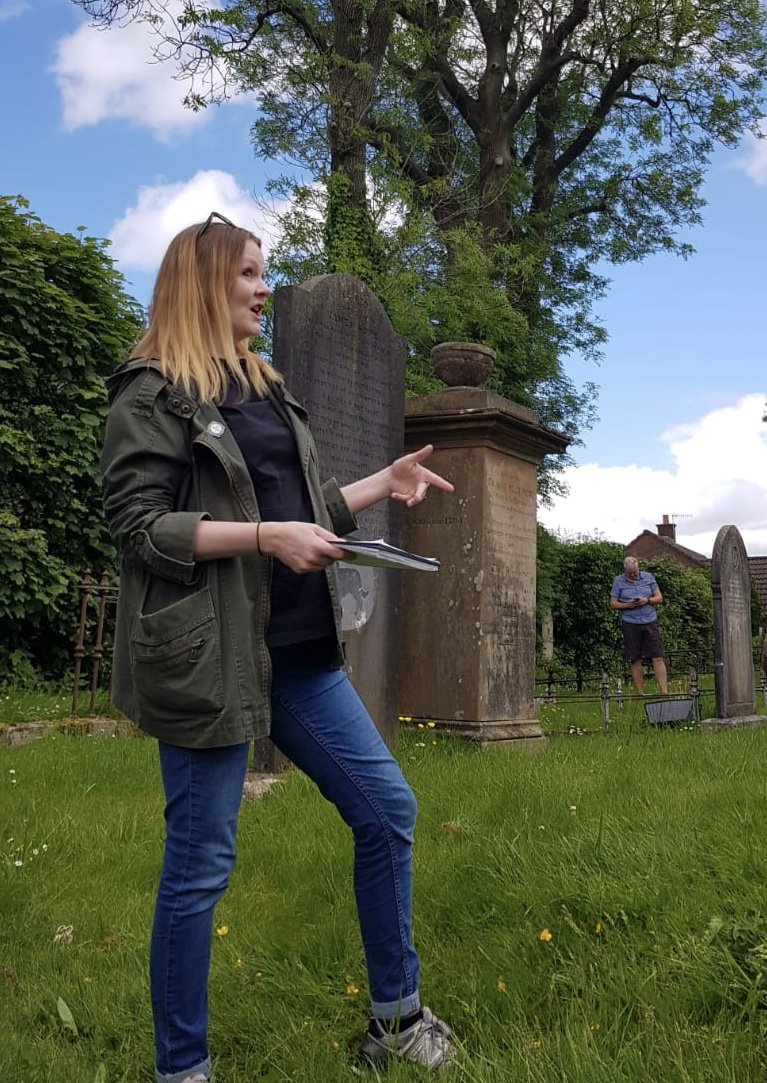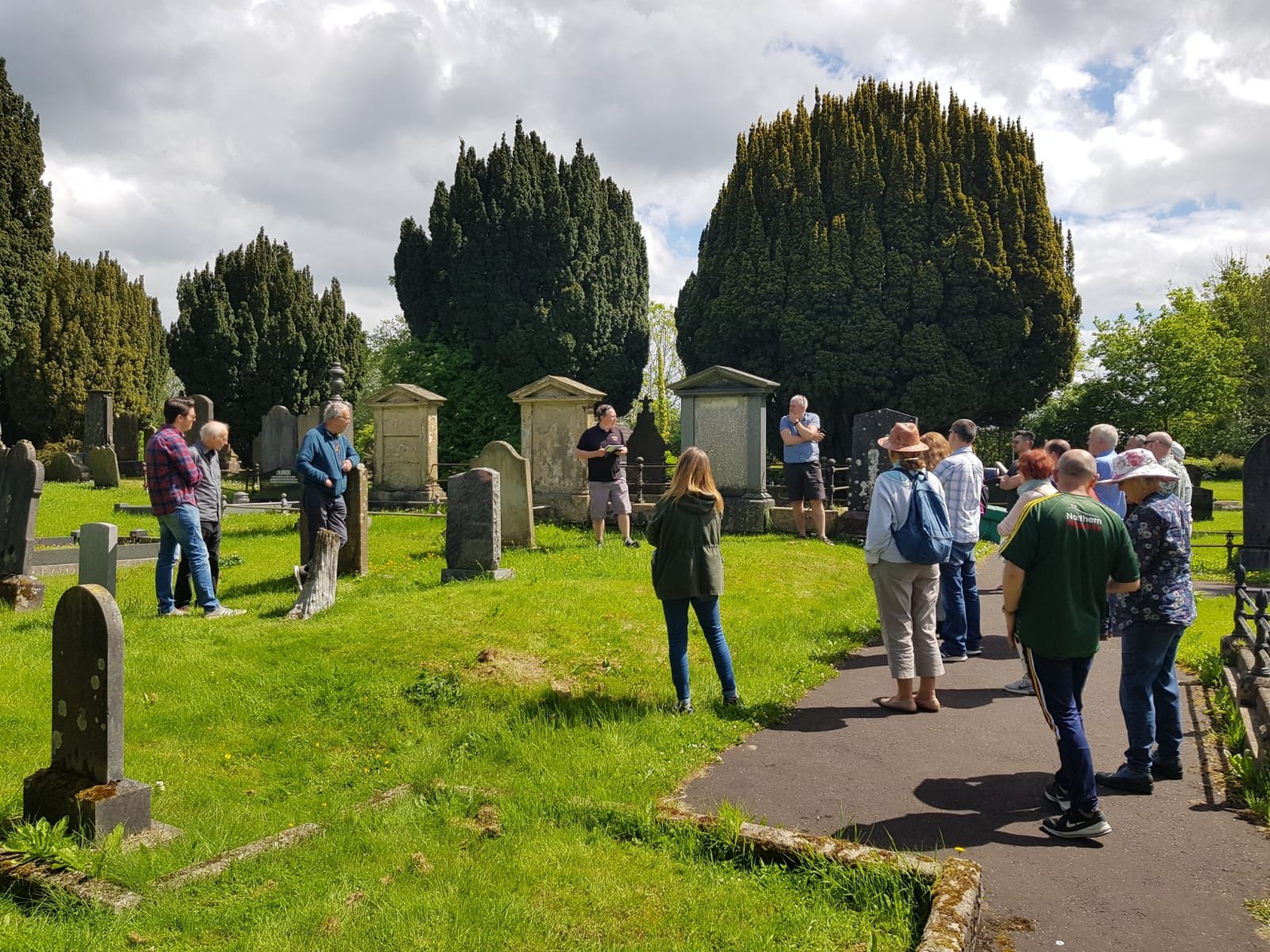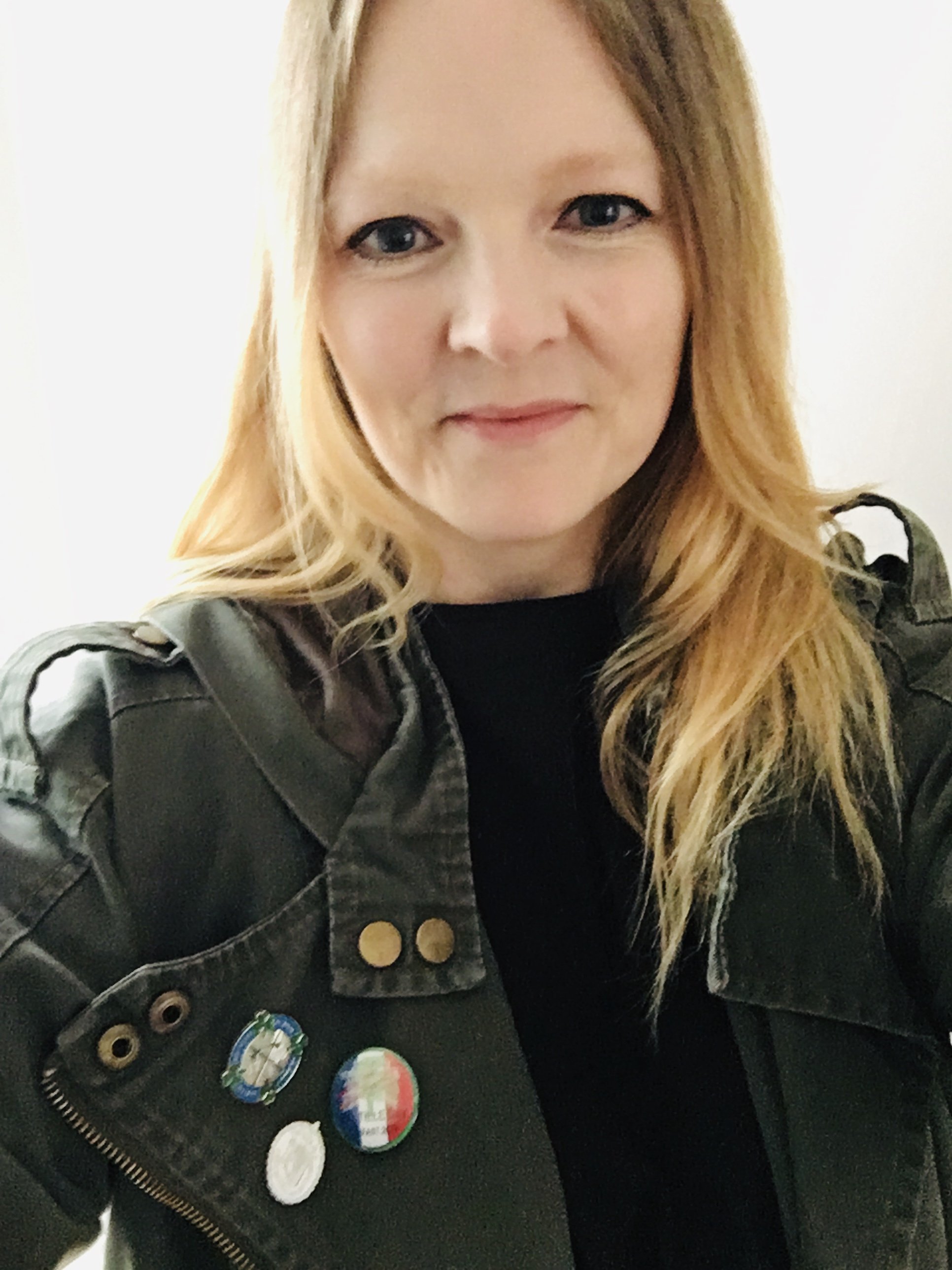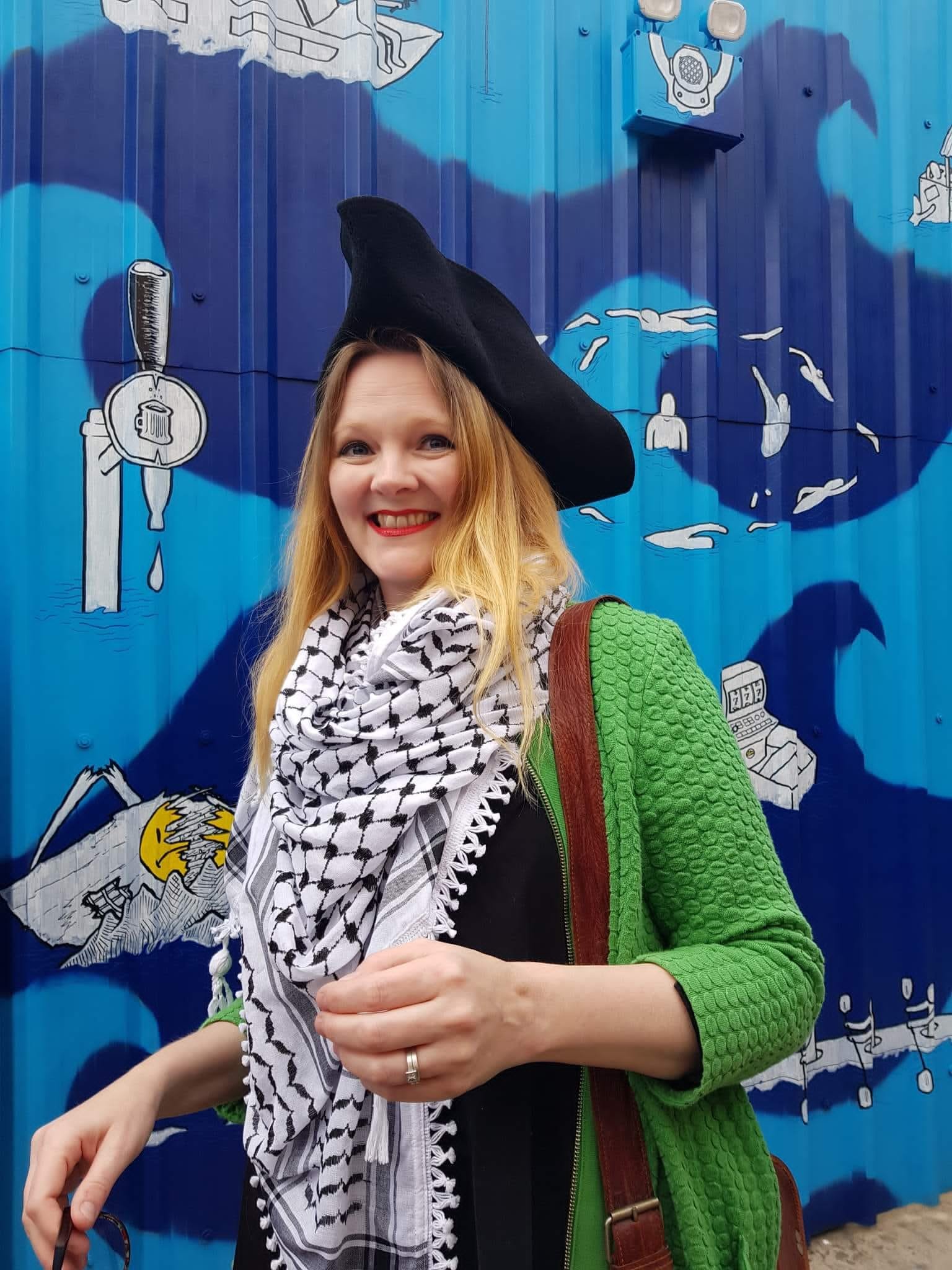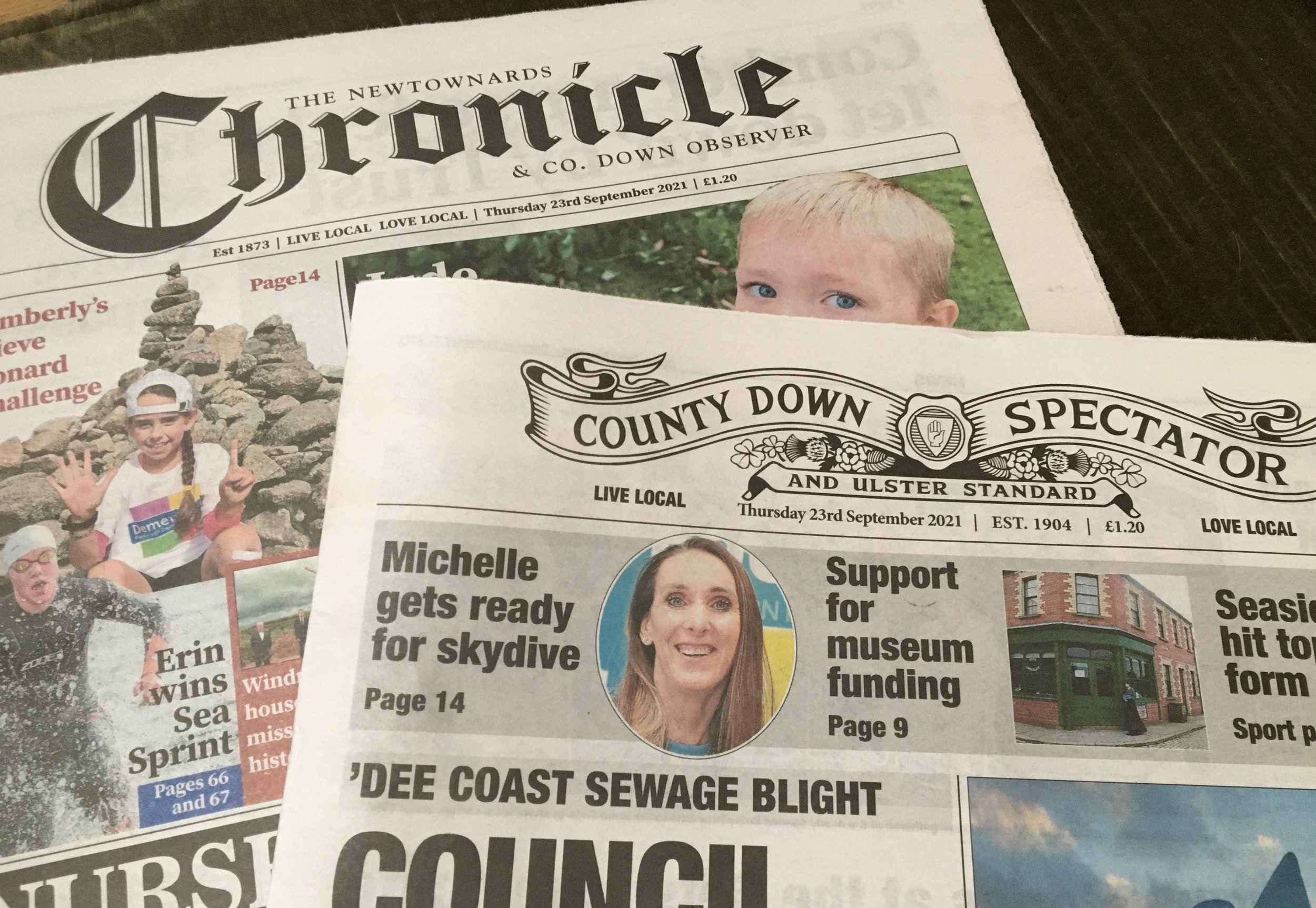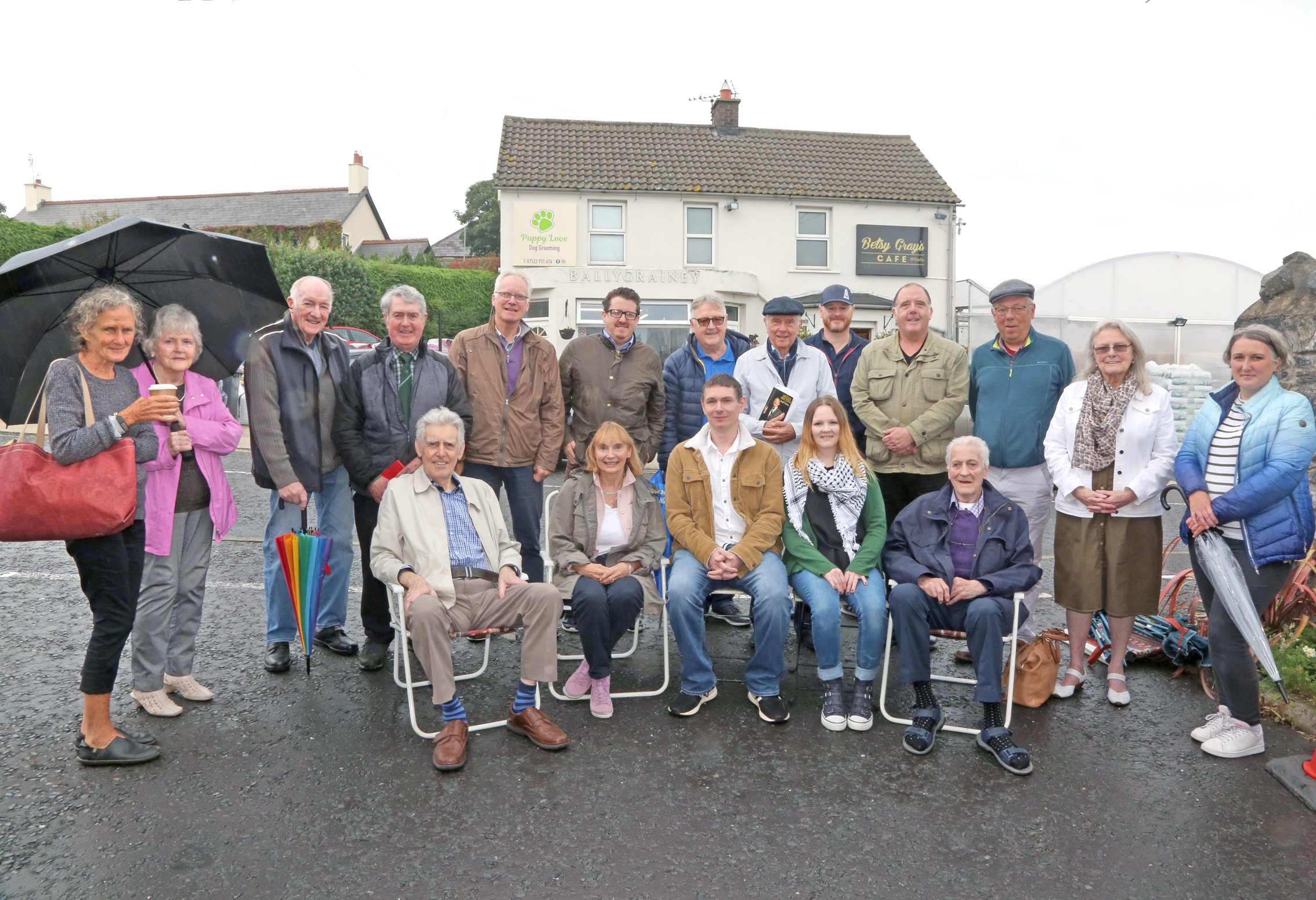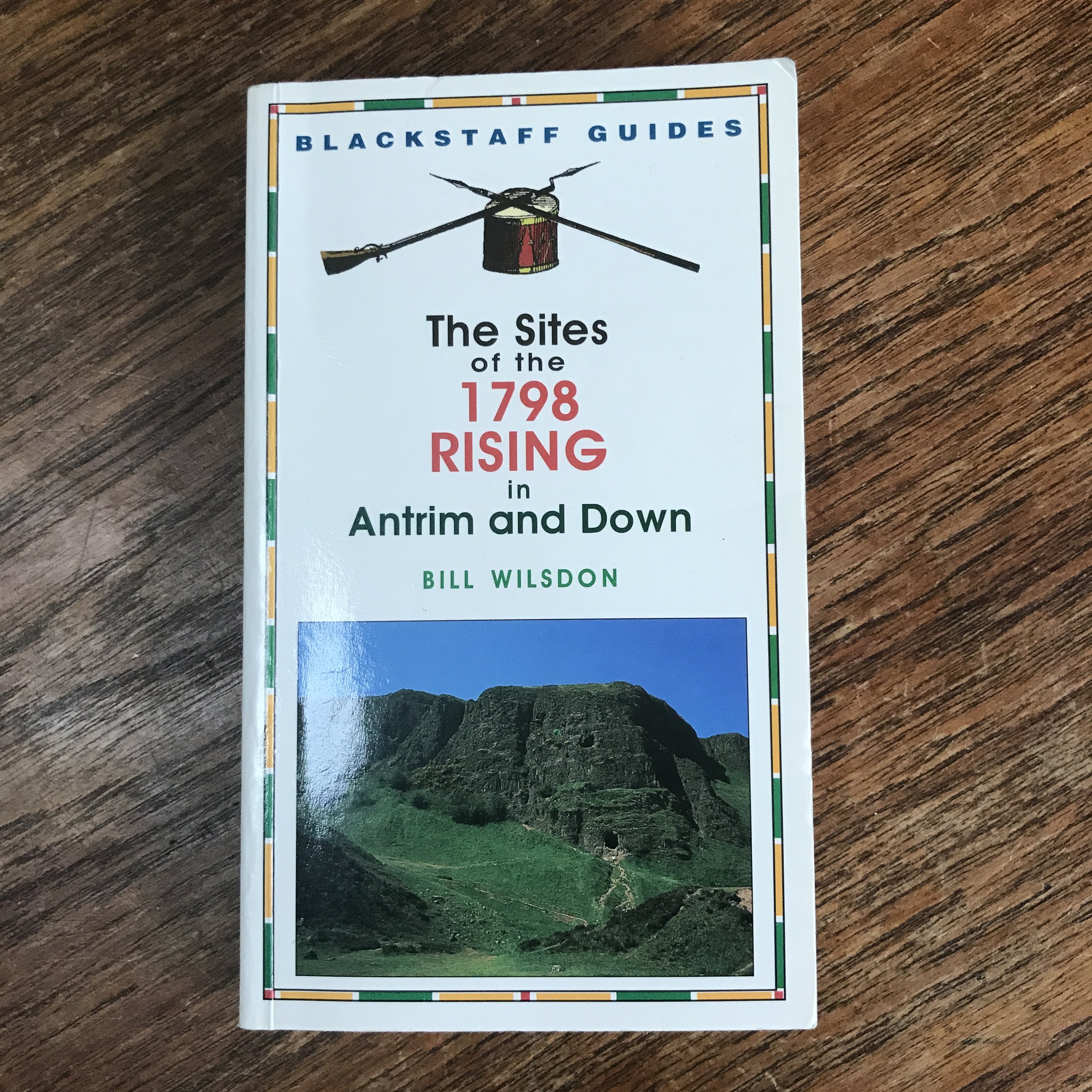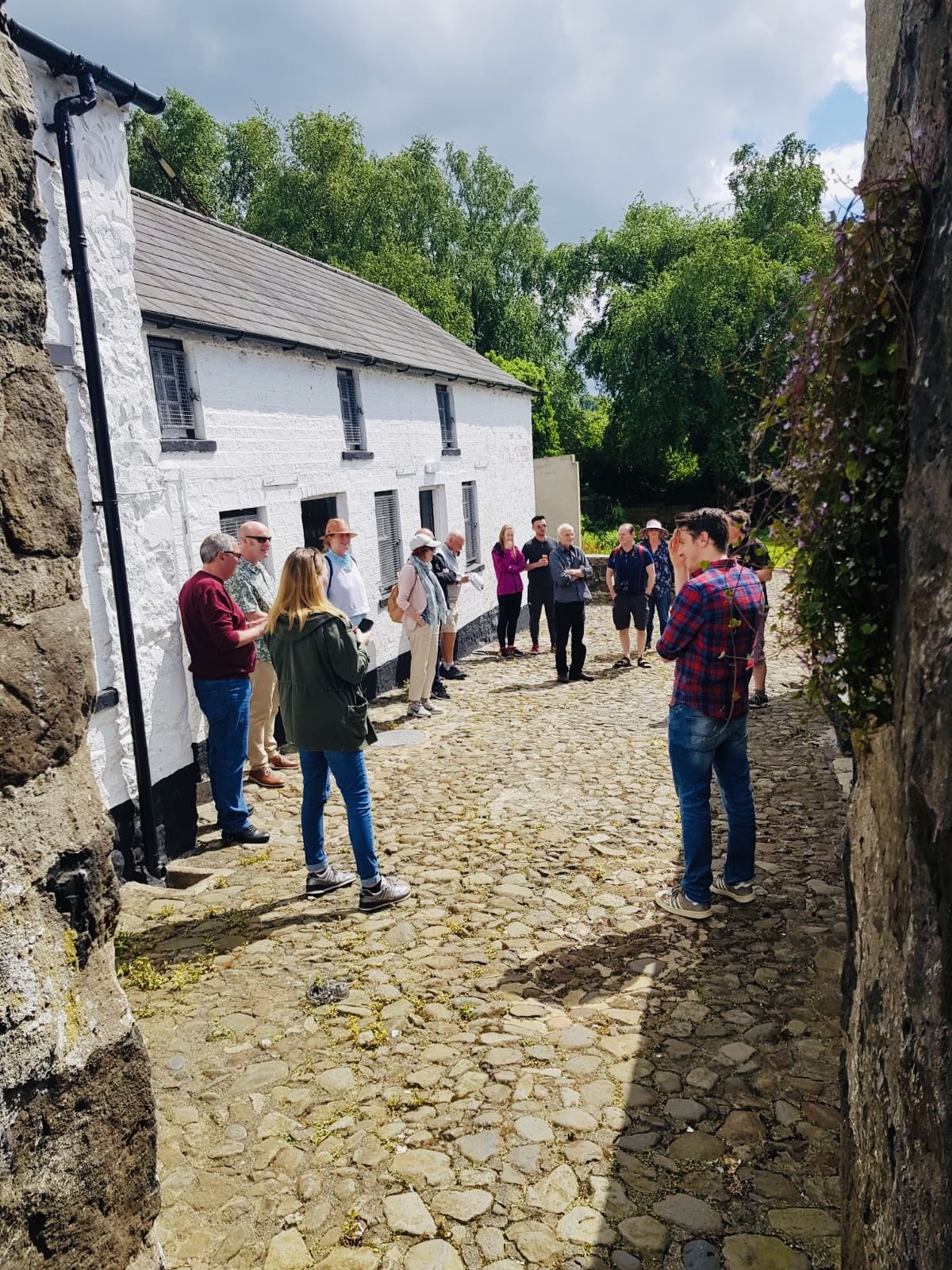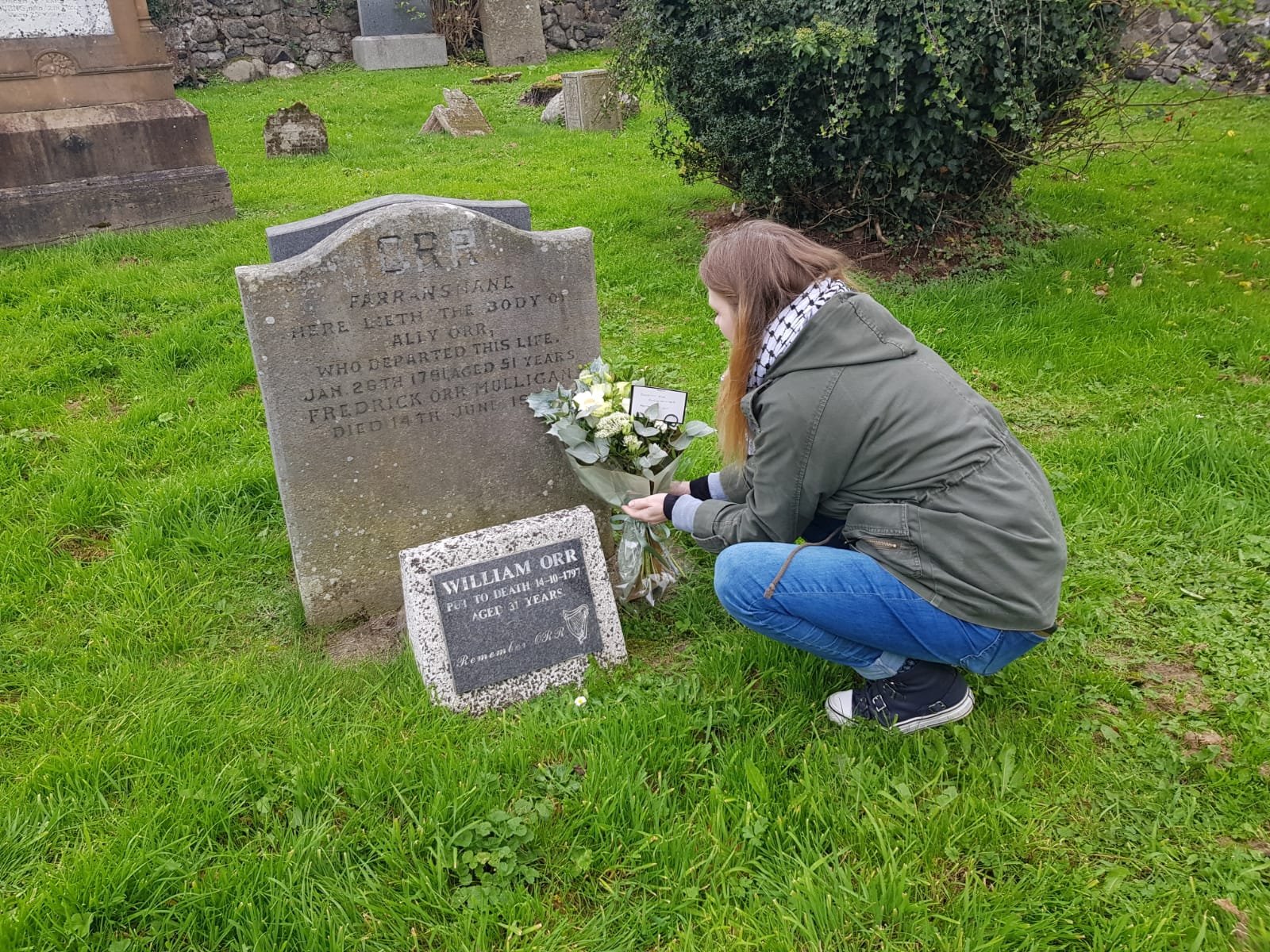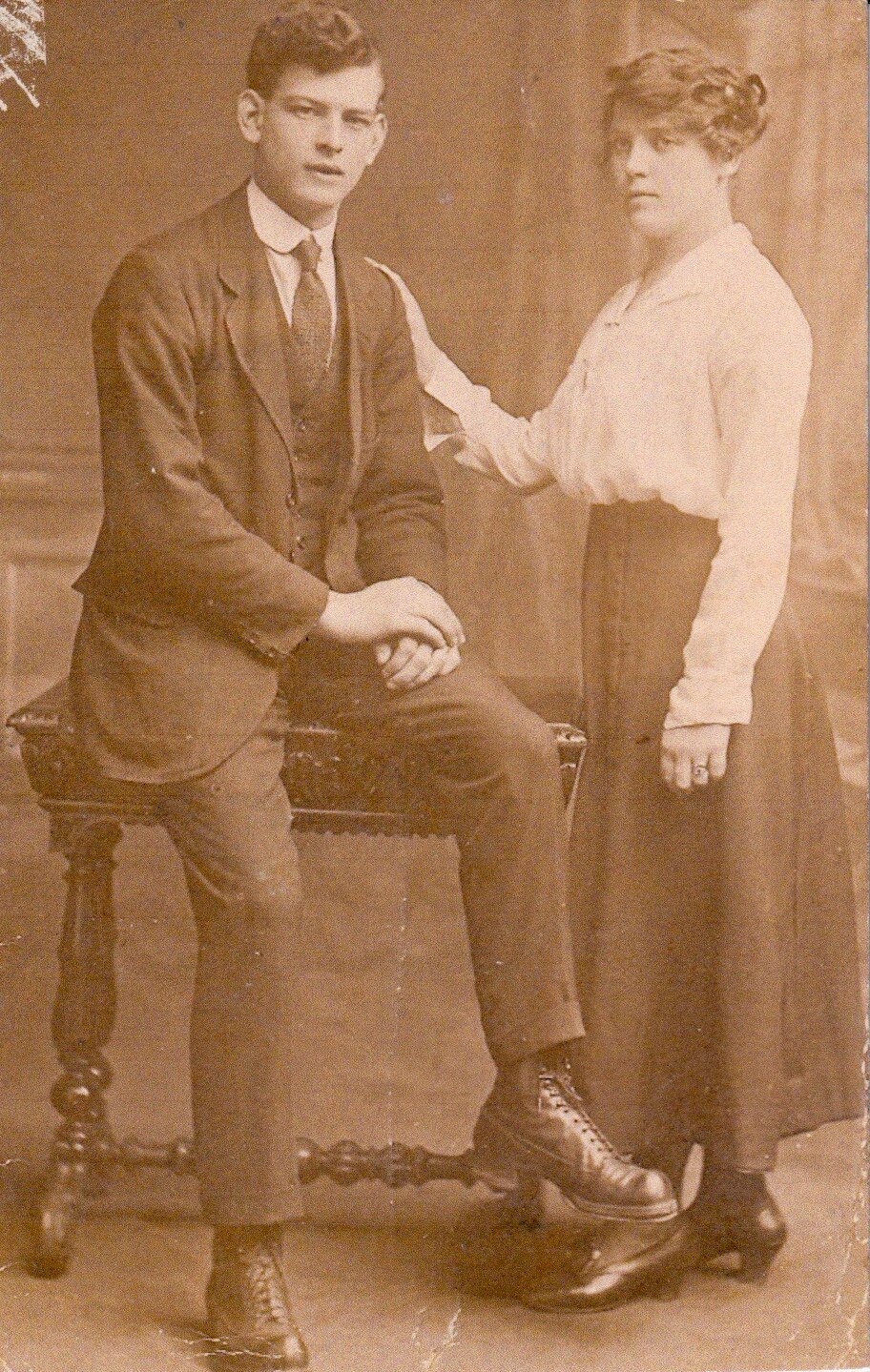For years I’ve been gathering up research about my family history. I became particularly fascinated by the women’s lives. Barely any of their stories had been passed on. So I set about reconstructing what I could. Imagining the gaps in between. People were interested in what I’d found, in a way that I didn’t expect. So I’ve spent a few months telling their stories to anyone who would listen. Some of these stories became interwoven with the centenary of partition, exploring women’s lives at this crucial moment of Irish history.
Maria, Elizabeth, Dora, Eliza Jane, Catherine, Lucy, Agnes, Bella, Cissie. These ones are for you xx
Podcast: The Lady for BBC’s Year ‘21.
TV documentary bit on BBC NI’s Spotlight: A Contested Centenary.
Belfast Telegraph feature.
And the original essay - Conjuring My Women: Protestant Lives During Partition - published by the always brilliant Honest Ulsterman journal.
Conjuring My Women: Protestant Lives During Partition
Where were my women on 3rd May 1921? Did they dance on the streets and wave flags when Northern Ireland was born? Were their struggles any different when they woke up the next day?
The women in my family were all ordinary Protestants from Belfast, Newry, and the wider counties of Down and Antrim. With one notable exception, my women's stories have not been overly preserved. I have suitcases of clippings on the war heroes, diaries of brave sailors and handed down stories of notable men. But I have fewer tools to discern how my women experienced their lives one hundred years ago. I've used official records, newspaper archives and fragments of family memories to piece their stories together and imagine their lives.
I wanted to see what could be learned by excavating the truly ordinary. None of my women did anything famous or infamous. But they glued their own worlds together. And sometimes they fell apart. Imagining their lives during partition is my small tribute to them. As well as an exploration of Protestant women's lives at this time.
*****
My great great grandmother was Maria Kirkpatrick, from Carnan Street, just off Belfast's Shankill Road. Pregnant, and quickly married, at 16. In 1921 she had given birth to eight children, and six were still living. Maria signed documents, including the Declaration in 1912 (the women's version of the Ulster Covenant), using only her mark. Half of her in-laws were Catholics from Sailortown. She was 61 when Northern Ireland was formed.
Maria lived in a time of tumultuous political change. The Shankill was heaving with energy. You could see the change literally written on the walls where she lived. A mural of Carson was painted on the gable wall of her street in 1914. There were frequent loyalist marches through the area, reports of shots fired. The year after partition, 1922, Maria's neighbour, Francis Crilly, a Catholic from Co. Kerry, was shot in their street after breaking curfew and "talking back" to the military.
According to the 1901 census, Maria's children spoke Irish. While she does not note Irish on her own census return, it's possible that Maria moved from rural Tyrone to industrial Belfast and brought Irish with her. Or perhaps her kids learned Irish in school on the Shankill Road, where one of the earliest northern Gaelic League branches was established. But by 1911 the Irish has gone from my family's records. I often wonder what happened during these years, in the build up to partition, that caused their Irish to become disremembered.
Elizabeth Lewis was Maria's daughter in law, my great grandaunt. She spoke Irish and English. Pregnant and married at 16, in the Church of Ireland beside Castlecourt shopping centre. Thirteen children by the time she was 31. Seven living, six dead. The family was often in court for not vaccinating their children, not sending them to school. Elizabeth would have been 41 when Northern Ireland was created. But she collapsed eight years earlier. Her heart just stopped. Slum life and no contraception would do that to a person.
My great grandmother was Dora Gibbney. Weaving linen at Ewarts Mill from at least the age of 15, she signed the Declaration at 16 and married at 24. Dora is within the grasp of living family story, so I can tell you that she was a strong Belfast woman that you wouldn't want to mess with. She was kind to my dad, and let him drink white lemonade and watch the Lone Ranger on her first TV in her two up, two down in Bloomfield.
Dora still lived on the Shankill at the time of partition. Northern Ireland's first election was due at the end of May 1921. The Duchess of Abercorn travelled to Ireland for a unionist election rally in the West Belfast Orange Hall and said in her speech that she had always had a "fellow feeling" with the loyalists of West Belfast. Something which - when I think about my women - I find hard to imagine.
The Duchess encouraged the loyalist women of the Shankill to vote early. It would have been the first time for them, thanks to the Representation of the People Act of 1918.
Dora didn't have a vote though. She was under 30. Women couldn't vote on the same terms as men until 1928. Maria was able to vote. Her house and yard in Carnan Street, at an annual rent of 5 pounds and 10 shillings, just inched her over the required property threshold. Whether or how she voted is unknown. All I know is that she would have struggled to read the ballot.
When I think of the Gibbneys, I think of contraction of political worlds. A narrowing of what might have formerly been a more expansive imagination. Before they moved to the Shankill, they lived in Sailortown. On the streets where they lived in Sailortown, a quarter of their neighbours were Catholic. In the Shankill, this was just 1%. In Sailortown, they lived close to Catholic uncles, aunties and cousins. These relatives did not follow them to the Shankill. In the early Shankill days, the kids spoke Irish - one of them is recorded as speaking only Irish. This too disappears. If the Gibbneys opened their front door, politics was writ large on the very bricks of their gable wall. It feels to me that their lives may have politicised by the time of partition.
But yet, it is hard to believe that politics alone defined these women. Their work in the mills was hard. Many started as young teenagers. They had so many babies. They bore so much loss. The workless years of the 1920s and 1930s were still to come. As was more intense sectarian violence. My guess is that the Gibbneys became loyalist women. But never fully mono-cultured. Because, scratch the surface, Belfast never is.
****
Catherine Armour was my great great grandmother, who lived in a small tenement house on the Shankill. I mention her briefly because maybe no-one else ever will. She married Andrew McCandless in 1896, and they had a baby in 1898. I haven't been able to locate Andrew anywhere after the baby arrived, in Belfast or beyond. It's likely that he did not stay around long after registering his name on the birth certificate.
Catherine's life seems to fall apart after this. She is not literate. She works as a weaver. In 1901, she lives with her mother Eliza Jane, a linen reeler, and toddler, Andrew - who we knew as Andy. By 1911, Eliza Jane and 12 year old Andy live in Winchester Street, but Catherine has gone.
I searched every workhouse, hospital, every corner of Ireland and Britain, every immigration record and passenger list for her. Nothing. My best guess is that by 1911, Catherine was boarding in a house in Bristol Street in the lower Shankill, where she grew up. Going by "Kate Armour" and still working at the mills. This was a cheaper and more transient part of town. The Belfast Newsletter records that a man (with a family name) was convicted of assaulting her in 1910.
Catherine dies as an old woman in Purdysburn - a psychiatric hospital - in 1963. She is buried in a paupers' grave in Belfast City Cemetery. Movingly, she gives her last address as 31 Winchester Street, the place where she may have last been with Andy. A house Catherine's niece lived in in 1963. Maybe the house was a basecamp amidst a deeper instability in Catherine's life. In any case, Andy never talked about her. Whatever happened may have caused an irreparable fracture.
I don't know if it goes without saying that neither Catherine, "Kate" nor Eliza Jane signed the Women's Declaration in 1912. My guess is that they were poor of health, disengaged, perhaps even avoiding official paperwork. Catherine would not have met the property threshold to vote in 1921, even if she wanted to.
When I think of the Armours, I think of rootlessness. The poverty beneath poverty. A poverty which erases lives from the records, and sometimes from family memories. Being a Protestant didn't garner Catherine many privileges in life. Hers was a state of being that moves alongside politics - created from it, and unable to find agency within it. It's also a story of absent men and violence against women. The sum of which seemingly overwhelmed Catherine's body and mind in the end.
*****
For some of my women, life was very different. They had lives defined by interests and passions, rather than poverty. Although their worlds were restricted in other ways.
Lucy Pitt, born in Ballywalter, was my great grandmother. Originating in Maldon - like the sea salt - generations of Pitts built and sailed boats for the landed families of the Ards Peninsula and North Down.
I know some things about Lucy from family stories. She taught music. She had an Orange sash. She liked to sit by the fire in her north Belfast home, suck strong mints and dispense biblical wisdom. She had three children, all living now still. But in 1921, that was ahead of her.
Lucy was too young to sign the Declaration in 1912, but I bet she would have. Her dad and aunt Emily did. Emily was so staunch that she refused to buy groceries from the Catholic shop in Strangford, instead taking a boat to the Protestant shop in Portaferry. Lucy was 23 in 1921, and too young to vote. But I'm sure she would have celebrated the formation of Northern Ireland.
My dad lived with Lucy for a time when he was young. He says when she spoke of politics, it was located in the early years of her life. Years which coincided with the lead up to partition. She was a fan of Carson. She believed in Ulster (six counties) as as a concept. But her political stories were not current. Her Orange sash was not something anyone remembers Lucy actually wearing. Although she remained a strong conservative and unionist, the sash was an artefact of her youth.
Behind Lucy's drift from public to private politics lay religion. She married Joe Mitchell in 1922 in Ballywalter Church of Ireland. Joe came from an Exclusive Brethren family. Later, they joined the Mustard Seed Mission Hall, where the Crumlin Road meets the Shankill. Joe preached and Lucy played the organ. Nothing mattered more to them than faith. Theirs was the kind of evangelicalism that focused on heaven and godly things, withdrawing from earthly distractions such as politics. They were friendly with Ian Paisley Sr. when he was a travelling evangelist, pre-DUP.
Although Lucy and Joe were firmly in the evangelical world, their version of faith was not strong enough for the Mitchells, for whom Exclusive meant Exclusive. They were ostracised from the family, not even being able to share a meal together.
This gives us an insight into what life might have been like for Agnes Logan, Lucy's mother-in-law and my great great grandmother. Agnes and her husband, Joseph A Mitchell married in a Presbyterian church in Ballymena, but soon converted to the Brethren. Agnes had 12 children in 19 years. Two died as toddlers, one died in each of the wars, eight lived longer than her, although most emigrated and only a few stayed Exclusive.
Agnes was 53 when Northern Ireland was formed. How much did she heed it, I wonder. The Exclusive Brethren were scrupulously apolitical. They attended a meeting Hall just off the Malone Road, and always lived nearby. There was no social mixing outside the faith community. Agnes did not sign the Declaration in 1912, and nor did any of her family. Religion for them meant withdrawal from secular life. They engaged with the outside world only through the family business. But in 1921, their shoe shop on the Ormeau Road had just gone bankrupt. Joseph died the next year and Agnes, presumably, was left to downsize her life.
When I think of the Mitchells, I think of strong religion. A religion that required a shunning of society, community and even family. Unionism ran deep but was not a public facing act. Religion also directed the women into very specific and limited roles as mothers and wives. As church organists and organisers, but never as leaders. Maybe they liked this. Maybe not.
*****
My Newry women were much more engaged with the world. Politics ran through the family's veins. Their loyalty was loud and clear, with years of military, quasi-military and security force membership. But that was the men. It is, as always, harder to uncover the lives and ideas of the women.
Isabella - Bella - Byars was born in Kilkeel, was married at 31 and moved to the outskirts of Newry. I know a fair bit about Bella and her family's lives thanks to a family historian, Ian Gribble, who wrote a book, Collectors of Knotted Wrack - The Kilkeel Byars, which included oral accounts and personal letters as well as research from official records.
The short version is this. The Byars were itinerant Presbyterian tailors from Scotland, who settled in Ireland in the late 18th Century in rural Kilkeel. They farmed quite a decent plot of land, while spinning, peat-digging, fishing, tailoring and gathering kelp (the knotted wrack). Many of their descendants married Catholics. They were far from rich, but, given their ability to weather the Great Hunger, and their position as tenant farmers rather than cottiers, they were more financially secure than many. Something which is not unrelated to their position as Protestants.
Bella saved whatever money she could, and from the 1880s to the 1910s, helped many of her siblings emigrate. She writes stoic yet melancholy letters to them in Canada, Australia and America, hinting at hard times at home. Bella and her entire family signed the Ulster Covenant/Women's Declaration in 1912.
By 1921, Bella was 64. She'd lost a small daughter to meningitis and a big son to the war. Her husband, William, died of natural causes in 1916. William left the family land, house, furniture and a legacy of £60 to his other young son. As for his wife, William's will said: "I declare that my wife Isabella McBride shall be at liberty to reside with my said son in my said Dwellinghouse and have the use and enjoyment of the furniture and other effects during her widowhood [...] I also declare that my said son should suitably properly clothe support and maintain her during the same period."
So while Bella's family had some financial security, the very chairs she sat on were legally owned by the men. It is as well that family relations were relatively harmonious, as Isabella was looked after well in her old age. And she was not entirely dependant either, making lace at home for extra income.
How did Bella experience partition as a border dweller? On 3rd May 2021, Newry was under curfew. RIC and Special officers were on the streets, firing shots and making arrests. The papers across all 32 counties of Ireland are full shootings, ambushes, riots and raids at this time. In 1923, Bella sends a letter to her brother, saying "times are a little quieter in Ireland at present they were not so quiet for a long time." While this unrest of course affected her life, Bella's men were more likely to be making the arrests than to be arrested. There would have been a security in that.
But there is more context to her story. Bella came from a very religiously mixed family. Every generation of the Byars saw religious conversions, in both directions. Sometimes this put a strain on families. One of the Catholic mothers beat her son's head for marrying a Protestant, to the point where he became deaf for life. Bella's brother joined the Orange Order, and boasted of carrying a pistol around Kilkeel. It would have been a challenge to hold these tensions in balance. But, as Bella is within the grasp of family story, I know that she did. Despite the backdrop of sectarian violence, her lifelong best friend 'Granny Gallagher' was Catholic and they raised their families side by side. Generations of their descendants are called after one another to this day.
Bella's daughter, Mary Jane - Cissie - is my great grandmother. She was a typist in 1911 and would ultimately go on to manage the office of the Newry Reporter, which was a fine job for a woman at the time. In 1921, Cissie was 30 and not yet married. She signed the Declaration in 1912. She was eligible to vote in the 1921 election and I have no doubt that she would have voted unionist.
Just down the road, a boy called John Jones, known as Jack, was coming of age. His teenage years had been difficult - stealing, being in court, losing an apprenticeship and ending up in an Industrial School. He joined the British army in 1910 and was stationed in Dublin. Jack's contribution to the British cause was minimal, as his records show that he spent much of his time in the army hospital with syphilis. In 1914, Jack was kicked out of the army for drunkenness and does a few stints in Mountjoy prison. Jack wound his way back up to Newry in the years that followed. The Northern Whig reports that he was in court in May 1925 and was imprisoned for one month for "intent to insult females."
Just a few months later, in August 1925, Cissie marries Jack. They were from neighbouring townlands, so she must have known at least something of his life. But she was 34 - past typical marrying age. I guess she felt that she had less options. The next year, Cissie became pregnant. Jack left immediately. Jumped on a boat to Liverpool and never made contact again. Not the first man to cut and run on my women. He never met his daughter. Jack's sister remained in touch with him until the 1960s. So he was not dead, just gone.
While Cissie was undoubtedly a unionist, this is not without nuance. I found condolence cards on her death from both Orangemen and nuns. I know that Cissie, like Bella, refused to fall-out with their mixed marriage families. Cissie's daugher, Florence, my grandmother, was a champion Irish festival dancer. I found an signed copy of William McBride's Ulster Covenant inside a music book from the Gaelic Society for the Preservation of the Irish Language. It's hard to untangle what this means. Other than the blendedness it points to, and the complexity of Cissie's life compared to the bare signature on the Declaration.
When I think of the McBrides, I think that perhaps my women didn't quite go along with all of their men's politics. Their lives were fundamentally shaped by husbands dying and leaving. But, in a way, this perhaps opened up space for them to live differently. For whatever reason Jack left, Cissie was freed by his absence. These are women who exercised what control they could. They probably achieved a level of independence in their lives that might not have not have been typical. And indeed would not have been possible, without a certain level of financial security, land or education. Which again, is not unconnected to their Protestantism.
*****
This is my handful of centenary stories, such fragments as they are. Hidden stories. Lives conjured from scraps.
If I told you about the men, it would be a different narrative. One about war, politics and reputation. Drink, work and the lack of work. The centenary would have emerged as ideology. Big unionism. Battles and balls.
But these are my women. Theirs are ordinary stories that few outside their own families will remember. Stories of poverty. Of female labour, in the mills and in their homes. Stories of child birth, child rearing and child loss. Stories of men's abandonment and violence. Stories of social mixing. Stories of religion and social separation. Also some stories of fledgling independence. Women who tried to create identities outside the home.
Did politics matter to my women? I don't know.
Half of my women signed the Women's Declaration in 1912 - which is the only evidence recorded of their political opinions. But I know that many of them would have celebrated the formation of Northern Ireland. Perhaps thrown on a sash for the day. Some would have opposed the clericalism of Catholicism, only to replace it with their own strictures. The new Northern Ireland, shaped by conservative evangelicalism, gave six county women no more power than the twenty-six.
The other half of my women did not sign the Declaration. Too ill, too busy, focussed on Jesus. I suspect one or two may even have been opposed.
Of the women that did sign on the unionist line, many had intimate friendships with Catholics in their wider families and communities. Many of them had Irish cultural layers. This nuance interests me.
Like my women, my own life is entangled with the politics of this island. My feelings about partition might be different to theirs. While many of my women lean orange, I am a Protestant Dissenter who regrets that line ever being drawn. Their histories and mine diverge as well as meet. Borders may dissolve in my lifetime, just as they appeared in theirs.
When 3rd May 2021 comes around, I don't think the centenary of Northern Ireland is something I could celebrate. But there are certain things I will hold in my thoughts.
Some of my women were the first generation of women to exercise their right to vote. Whoever they voted for, they were history-makers.
I will light a candle for the 16 year old brides, the shotgun weddings and the abandoned mothers. I will say thanks for my own two children and for the freedom that contraception brings.
Like my women, I will miss family members in exile from this beautiful and wretched place.
I'll reflect on how those who managed to carve out some independence, did so from a baseline of financial security. To an extent, they were able to build on their historical privilege as Protestants in Ireland. For others though, Protestantism was no passport to comfort or security. Many of my women lived on the brink of survival, sometimes in the shadows of society. With broken bodies and sometimes minds. It's difficult to identify privilege in this context. I recognise the parallels today.
These are just fragments of my women's lives, pieced together by a great/great/great grand-daughter they never knew. Excavating their stories did teach me things about women's experiences at the time of partition. But most of all, it just feels good to say their names.
Maria, Elizabeth, Dora, Eliza Jane, Catherine, Lucy, Agnes, Bella, Cissie.
I live with your ghosts and your lives shape me still.
Thanks to Lisa Rea and Allie Nickell for their help with the genealogical research.












